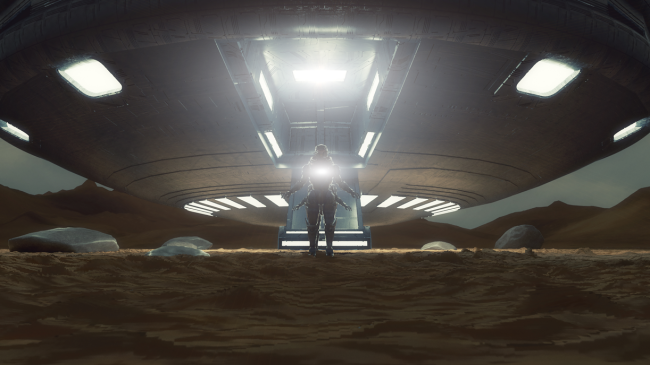iStockphoto
Despite the efforts of so many people and the monumental advancements in technology over the decades, we still have no definitive proof that aliens exist. (Or at least proof that has never been made public.)
We have not only been able to study and view much of our solar system, but also solar systems far beyond the Milky Way.
It is on these far away exoplanets – planets that orbit a star outside our solar system – that scientists have focused much of their search for alien life.
It is in so-called “terminator zones” on these exoplanets – the dividing line between the exoplanet’s day and night sides – where they believe alien life may be hiding.
They believe that the dark side of the planet would be too cold and any water on that side would be frozen. On the light side, the scientists believe it would be too hot and all liquid would evaporate.
It’s in that small zone in-between scientists think alien life could survive, the Daily Star reports.
“The dayside can be scorching hot, well beyond habitability, and the night side is going to be freezing, potentially covered in ice,” said Dr. Ana Lobo of the University of California, whose study was published in The Astrophysical Journal.
“You could have large glaciers on the night side. You want a planet that’s in the sweet spot of just the right temperature for having liquid water.
“We are trying to draw attention to more water-limited planets which despite not having widespread oceans could have lakes or other smaller bodies of liquid water and these climates could actually be very promising.
“By exploring these exotic climate states we increase our chances of finding and properly identifying a habitable planet in the near future.”
They simulated their climate analysing their varying temperatures, wind patterns and radiation exposure.
Using software normally deployed to model Earth’s climate they found a `just right’ zone around the terminator of these exoplanets which could hold liquid water enabling the existence of life.
This was only the case when there was a lot of land on the planet – if it was largely covered by ocean the water on the dayside would evaporate and cover the planet in vapour.
That would change the temperature of the terminator zone and make it no longer habitable.
“Ana has shown if there’s a lot of land on the planet, the scenario we call ‘terminator habitability’ can exist a lot more easily,” said Study co-author Dr. Aomawa Shields.
“These new and exotic habitability states our team is uncovering are no longer the stuff of science fiction. Ana has done the work to show that such states can be climatically stable.”
They now believe this is the first time scientists have been able to prove that there is a potential for alien life in these “terminator zones.”

